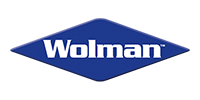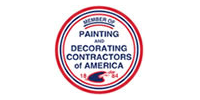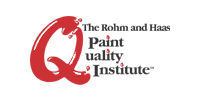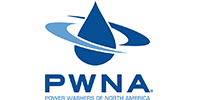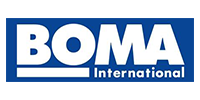Commercial & Industrial Painting
How do paint contractors select one brand of paint over another?
On most commercial painting jobs, the client defers to the painter to determine which brand of paint is best for the project. So it serves to reason, that contractors are usually as dedicated to their brand of paint as they are to any other tool in their workbelt. In a recent study released by the Paint Quality Institute, the top reasons given by contractors for their paint brand preference were:
- Good quality paint 33%
- Coverage/hiding features 23%
- Cost/price 18%
- Durability 10%
- Past experience with paint 7%
- Ease of application 6%
- Manufacturer’s reputation 6%
- Appearance of finish 6%
- Convenient store location 5%
Our office is open 24 hours a day, 7 days a week. Is there a way to paint “around” our operations?
Yes. For projects where employees and customers cannot be displaced for long periods or time, or where indoor ventilation is limited, paint contractors are increasingly turning to odorless paint products, known in the industry as low- or no-VOC paints. Odorless paint, first made popular in the early 1990’s, generally has a light, sweet scent that dissipates more quickly than the typical smell of wet latex paint. On jobs where quick turnaround is essential and air-quality is vital, for instance, when painting in hospitals, public transit centers, schools, and operations that run around the clock, odor-less paint is a viable workaround.
We’re using an outside painter for the first time, what information should I request in my job estimate?
Estimates should be tailored to your particular needs, and when available, your written job specifications. Minimally, have the painter provide you with a quote that contains the following:
- Lead point-of-contact’s information.
- Clear description of the areas to be painted, including all surfaces.
- List of products that will be used on the job.
- The colors you chose for the project.
- A schedule for the work – especially if it will done in phases – along with an estimate of how long the job will take to be completed.
- The costs – in detail.
- Any special terms or conditions related to the project.
- Your quote should also be signed and dated by the paint company representative, and it should include the estimate expiration date and any warranties or guarantees for the job.
Residential Painting
Can you paint over wallpaper?
Yes, so long as the wallpaper is in good condition. However, if you have metallic wallpaper, we suggest removing the wallpaper and not trying to paint over it, for good results will not be achieved.
How important is surface preparation before painting?
Very important. In fact, surface preparation (spackling holes, sanding rough spots, cleaning walls and doors with a mild detergent) is the single most important part of any paint job. Common paint problems associated with poor paint adhesion and stain bleed-through can usually be traced back to a lack of surface preparation. A clean, smooth and primed surface is usually best for painting.
To prime or not to prime?
For experienced painters, there’s no question – we always prime before painting the topcoat of your interior and exterior projects. There are many reasons to prime, however, tops on the list is:
- Ensures greater adhesion of the topcoat of paint.
- Greater color retention and fade protection.
- Prevents grease, mildew, smoke and water stains from bleeding through to surface.
- Better resistance to peeling during cleaning and scrubbing.
My aluminum siding has seen better days. Can it be painted?
Yes. Aluminum siding tends to chalk as an adverse effect to harsh weather conditions. Painting the siding first with a chalk-penetrating acrylic latex primer, and then with roughly 2 coats of an exterior satin finish latex house paint will get you pretty close to that original factory look you once enjoyed. *Note that all chalk should be removed prior to painting your siding. A high-pressure powerwashing first should do the trick.
The weather is cooling, how long do I have to get my house exterior painted?
To ensure the best overall paint performance, temperatures typically need to be 50 degrees or higher when painting outside surfaces with exterior latex or acrylic paints. Some “cold weather” paints do allow application at 35 degrees.
Powerwashing
What is Powerwashing?
Powerwashing is the application of high pressure water spray to a surface. The spray, generated by portable pumps and mixed with a special combination of water and washing detergents, can be as powerful as 4 to 6 GPM (gallons per minute flow rate), 1,500 to 3,500 PSI (pounds per sq inch pressure) and up to 200º F. By comparison, an average powerwasher can produce a spray that is over one hundred times more powerful than your typical garden hose.
Is there a difference between powerwashing, pressure washing, and high-power pressure cleaning?
No. These are all terms used to describe the same process of cleaning dry surfaces with high pressure water spray.
What can be pressure cleaned?
Generally, almost anything can be powerwashed. However, practically speaking, most pressure cleaning applications involve immovable items that must be cleaned at their locations. Typical residential jobs include cleaning house exteriors (siding and brick face), decks, patios, awnings, walkways and fences.
Is powerwashing safe for painted surfaces?
Yes. The basic concept of high pressure washing with detergent on painted surfaces has been tested and proven. With the correct combination of pressure, flow, chemicals and temperature a wide variety of jobs can be accomplished without scrubbing or brushing. Experts agree that powerwashing is safer than steam cleaning and sandblasting.
How often should I get my deck powerwashed and sealed?
Under normal foliage and weather conditions, you should pressure-clean and seal your wood deck once every two years.

